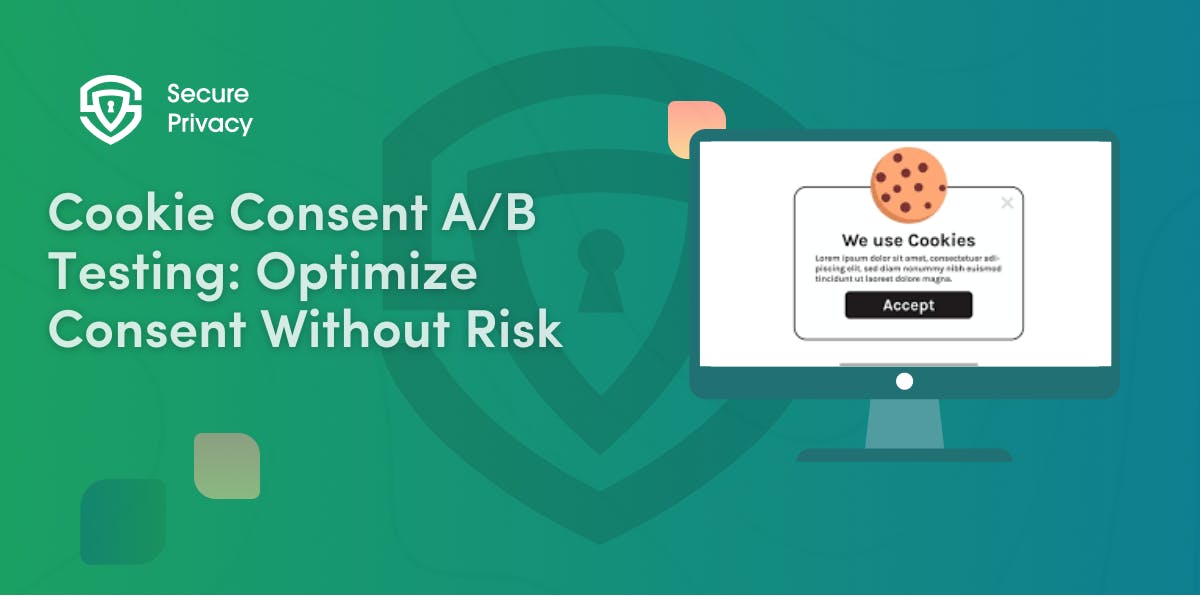Understanding the Difference Between a PIA and DPIA in GDPR Privacy Risk Assessments
Learn the key differences between Data Protection Impact Assessments (DPIAs) and Privacy Impact Assessments (PIAs). Understand their importance in ensuring compliance with privacy laws and best practices for mitigating privacy risks.
In terms of compliance insights, it is important to understand the difference between Data Protection Impact Assessments (DPIAs) and Privacy Impact Assessments (PIAs). DPIAs and PIAs are both tools that organizations can use to assess and mitigate privacy risks associated with their data processing activities. However, there are some key differences between the two.
What is a Data Protection Impact Assessment?
A Data Protection Impact Assessment is a process that organizations undertake to identify and mitigate potential risks to individuals' privacy rights and freedoms. It is a crucial tool in ensuring compliance with privacy laws and conducting privacy assessments.
The purpose of a DPIA is to assess and manage the potential impact of data processing activities on individuals' privacy. It helps organizations identify any potential risks, evaluate the necessity and proportionality of the processing, and implement measures to address those risks.
DPIAs are particularly important when processing activities involve sensitive data or have significant impacts on individuals. They help organizations demonstrate accountability and ensure that privacy is considered from the early stages of a project or process.
What is a Privacy Impact Assessment?
A Privacy Impact Assessment is a systematic process used by organizations to assess and manage the potential privacy risks associated with their data processing activities. It is an important tool in ensuring compliance with privacy laws, conducting privacy assessments, and promoting responsible data handling practices.
The primary purpose of a PIA is to identify and evaluate the potential privacy risks and impacts that may arise from the collection, use, and disclosure of personal data. It helps organizations understand the potential implications of their data processing activities on individuals' privacy rights and freedoms.
By conducting a PIA, organizations can assess the necessity and proportionality of their data processing activities, identify potential privacy risks, and implement measures to address those risks. It involves a comprehensive analysis of the data processing practices, including the types of personal data collected, the purpose of processing, the security measures in place, and the potential impact on individuals.
What is the difference between PIAs and DPIAs?
While DPIA and PIA serve similar purposes, there are slight differences between them. DPIA is a term commonly used in the context of the General Data Protection Regulation (GDPR). It emphasizes the need to assess privacy risks and implement controls to mitigate them. On the other hand, PIA is a broader term that encompasses various privacy assessments used interchangeably with DPIA. The main difference lies in the specific regulations and requirements associated with each term.
The importance of PIA and DPIA compliance
Complying with DPIA and PIA requirements is crucial for organizations to protect the privacy and data of individuals. Conducting these assessments helps identify and mitigate potential privacy risks, ensuring that data processing activities are done in a manner that respects privacy rights. By implementing data privacy and protection measures, organizations can establish trust with their customers and avoid costly data breaches.
What is the role of DPIA and PIA in GDPR compliance?
Under the GDPR, organizations are required to conduct DPIAs for processing activities that are likely to result in a high risk to the rights and freedoms of individuals. DPIA helps organizations assess the potential risks associated with data processing and implement appropriate measures to mitigate those risks. This ensures compliance with GDPR requirements and demonstrates a commitment to privacy protection.
How can data privacy risk assessments be conducted confidentially?
Conducting data privacy risk assessments confidentially is crucial for organizations to protect the privacy rights of data subjects and mitigate risks, particularly in the context of high-risk processing of personal data.
To conduct data privacy risk assessments confidentially, organizations can take the following steps:
- Secure Data Handling: Implement strong security measures like encryption and access controls to protect personal information.
- Restrict Access: Limit access to assessment data to authorized personnel only.
- Anonymize Data: Anonymize personal data whenever possible to enhance confidentiality.
- Training and Awareness: Train employees on data privacy and confidentiality to ensure they understand the importance.
- Seek External Support: Consider engaging experts to assist with confidential handling of data.
Best practices for conducting DPIA and PIA
Here are some best practices to conduct DPIAs and PIAs effectively:
- Conduct Thorough Data Mapping: Start by understanding the types of personal data processed, the purposes of processing, and any data sharing with third parties.
- Evaluate Risks: Assess the potential risks associated with data processing activities, especially those involving sensitive data or significant impacts on consumers.
- Ensure Legal Compliance: Review applicable privacy laws and regulations to ensure compliance throughout the assessment process.
- Involve Relevant Stakeholders: Collaborate with key stakeholders, including data protection officers, legal teams, and IT experts, to gather diverse perspectives and expertise.
- Document Findings: Maintain comprehensive documentation of the assessment process, including identified risks, measures taken to mitigate them, and decision-making rationale.
- Prioritize Privacy by Design: Incorporate privacy considerations into the design of new systems, processes, and technologies from the outset.
- Engage Data Subjects: Seek input from data subjects and consider their rights and concerns throughout the assessment process.
- Monitor and Review: Regularly review and update DPIAs and PIAs to address changes in data processing activities or emerging privacy risks.
Automating data privacy assessments
As data privacy and security become increasingly important, automation can streamline the DPIA and PIA processes . Automated tools and software can help organizations identify and mitigate privacy risks more efficiently, saving time and resources . By automating data privacy assessments, companies can ensure consistent and compliant practices throughout their privacy programs.
DPIA vs. PIA: Which one to use?
The choice between DPIA and PIA depends on the specific requirements of the applicable privacy laws and regulations. While DPIA is specifically mentioned in the GDPR, PIA is a broader term that can be used interchangeably. It is essential to understand the regulations and guidelines relevant to your organization and choose the appropriate assessment accordingly.
Common misconceptions about DPIA and PIA
There are a few misconceptions surrounding DPIA and PIA:
- DPIA and PIA are the same: Although they serve similar purposes, DPIA and PIA have distinct differences, as mentioned earlier.
- They are only for GDPR compliance: While DPIA is specifically mentioned in the GDPR, PIA and similar assessments are also valuable for complying with other privacy laws and regulations.
- They are a one-time requirement: DPIA and PIA should be conducted regularly, especially when there are changes in data processing activities or privacy risks.
Ensuring privacy compliance with DPIA and PIA
In conclusion, DPIA and PIA are essential tools for organizations to assess and mitigate privacy risks associated with data processing activities. By conducting these assessments, companies can ensure compliance with privacy laws, protect the rights and freedoms of individuals, and maintain trust with their customers. Automating data privacy assessments can further streamline the process and enhance privacy compliance. Remember to regularly review and update your DPIA and PIA processes to adapt to changing privacy laws and regulations.
In summary, DPIA and PIA are crucial components of a comprehensive privacy program. By understanding the difference between them and their importance in privacy compliance, organizations can effectively manage privacy risks and protect the data of individuals. Stay proactive, automate where possible, and prioritize privacy to build trust and ensure compliance with privacy laws and regulations.
Get Started For Free with the
#1 Cookie Consent Platform.
No credit card required

Browser Signals Explained: Privacy, Consent & Compliance
Your website loads tracking scripts before users interact with consent banners. Third-party cookies fire automatically. Analytics platforms collect behavioral data by default. Each practice creates potential violations under GDPR, ePrivacy, and state privacy laws — particularly when users have configured browser signals expressing explicit privacy preferences.
- Legal & News
- Data Protection
- GDPR
- CCPA

AI Governance Framework Tools: How to Operationalize Responsible AI
Organizations deploying AI systems face a critical gap between regulatory requirements and operational reality. While frameworks like the EU AI Act, NIST AI RMF, and GDPR define what organizations must do, they don't explain how to implement these obligations across dozens or hundreds of AI systems. This gap has created an emerging category of software: AI governance framework tools that translate abstract compliance requirements into machine-enforceable controls.
- Legal & News
- Data Protection
- GDPR
- CCPA

Cookie Consent A/B Testing: A Practical GDPR-Safe Guide
Most companies treat A/B testing their cookie consent banners like any other conversion optimization exercise — tweaking colors, adjusting copy, testing button placement to maximize acceptance rates. But cookie consent isn't just another conversion funnel. It's a legal framework designed to protect user autonomy, and testing it incorrectly can invalidate consent entirely, exposing your organization to regulatory fines ranging from €1.5 million to €746 million.
- Legal & News
- Data Protection
- GDPR
- CCPA

